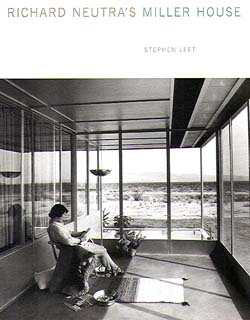(Princeton Architectural Press)
The economic factors of the Great Depression played a role in the commission and construction of the Miller House. The commissioning of any type of building in the 1930s was an incredibly optimistic venture; the investment of capital in an architect-designed winter house in the desert involved an even greater financial risk.

But the optimism and increased work brought on by a relatively brief upturn in the building industry that occurred in the mid-1930s contributed to St. Louis socialite Grace Lewis Miller’s decision to carry through with her plans to build a second home.
At the same time, however, this mid-decade increase in building activity also had a negative effect on the project.
As Neutra’s practice experienced a dramatic rise in commissions, the demands upon Neutra’s time escalated and his health declined.
This forced the architect to limit the number of visits he made to the construction site. Meanwhile, the rise in labor and building costs attendant on an improved economy helped drive the project over budget.
The increase in construction in 1936 was significant. As recently as 1934, 100 percent of the respondents to a survey or residential construction in the U.S. on the Pacific Coast answered “no” to the survey’s question: “Is any considerable residential construction contemplated in your community?”
In the first quarter of 1936, residential building construction saw a 75 percent gain nationwide over the same period in 1935, and non-residential building construction saw a 118 percent gain.
In a letter dated October 6, 1936, Neutra warned Miller that the boom could detrimentally affect construction costs of the house and noted his dismay over the unstable economy: “It is a sad thing that we always tumble from depressions into booms and back again.”
The mid-decade boom would prove to be temporary, but it offered relief from the relentless stranglehold the depression had had on investment in the early 1930s and seemed to provide hope for the future.
By early 1936 there was growing evidence that economic conditions were improving nationally, albeit unevenly.
Unemployment had declined to approximately 13 percent (from a high of 25 percent in 1933) and industrial production had doubled since 1932.
In April 1936 the editors of Architectural Forum predicted
a substantial recovery for the year in the building sector, noting that building activity had increased by December 1935
to approximately 82 percent of the 1920-1930 pre-depression average.
Predictions for 1936 were for a 100 percent increase over 1935 in residential construction for the largest total in building expenditures in five years.
By early 1937, there were strong indications that the worst was over and that the Great Depression might come to an end.